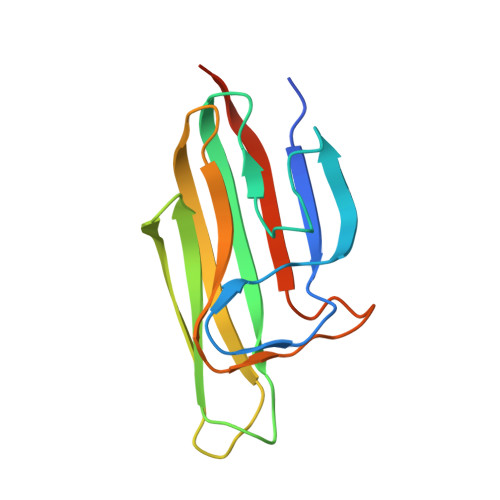Anterograde C1Ql1 Signaling is Required in Order to Determine and Maintain a Single-Winner Climbing Fiber in the Mouse Cerebellum
Kakegawa, W., Mitakidis, N., Miura, E., Abe, M., Matsuda, K., Takeo, Y., Kohda, K., Motohashi, J., Takahashi, A., Nagao, S., Muramatsu, S., Watanabe, M., Sakimura, K., Aricescu, A.R., Yuzaki, M.(2015) Neuron 85: 316
- PubMed: 25611509
- DOI: https://doi.org/10.1016/j.neuron.2014.12.020
- Primary Citation of Related Structures:
4D7Y - PubMed Abstract:
Neuronal networks are dynamically modified by selective synapse pruning during development and adulthood. However, how certain connections win the competition with others and are subsequently maintained is not fully understood. Here, we show that C1ql1, a member of the C1q family of proteins, is provided by climbing fibers (CFs) and serves as a crucial anterograde signal to determine and maintain the single-winner CF in the mouse cerebellum throughout development and adulthood. C1ql1 specifically binds to the brain-specific angiogenesis inhibitor 3 (Bai3), which is a member of the cell-adhesion G-protein-coupled receptor family and expressed on postsynaptic Purkinje cells. C1ql1-Bai3 signaling is required for motor learning but not for gross motor performance or coordination. Because related family members of C1ql1 and Bai3 are expressed in various brain regions, the mechanism described here likely applies to synapse formation, maintenance, and function in multiple neuronal circuits essential for important brain functions.
Organizational Affiliation:
Department of Physiology, Keio University School of Medicine, Tokyo 160-8582, Japan; Core Research for Evolutional Science and Technology (CREST), Japan Science and Technology Agency (JST), Tokyo 102-0075, Japan.


















